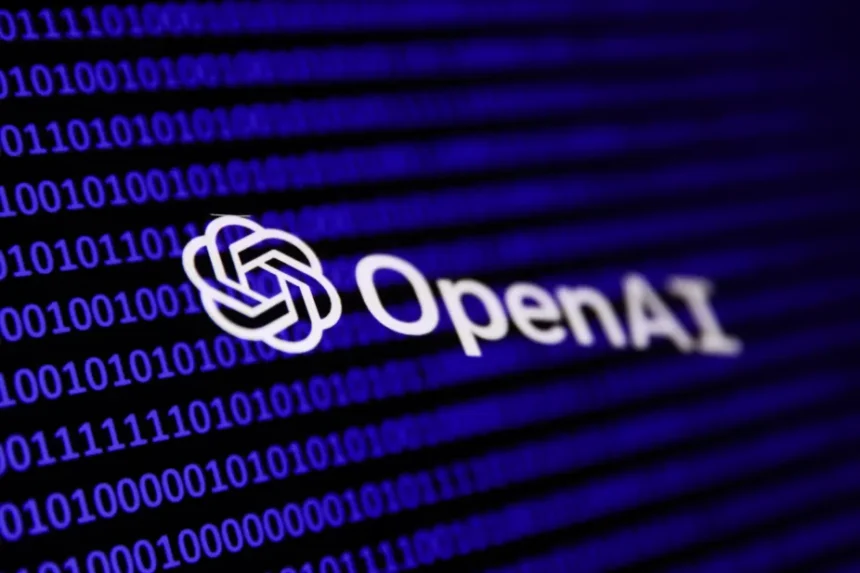In a significant leap toward the future of AI-driven software development, OpenAI has announced the release of a new generation of models: GPT-4.1, along with its smaller siblings, GPT-4.1 mini and GPT-4.1 nano. These models are engineered with a sharp focus on coding and instruction following — raising the bar for what developers can expect from AI assistants.
Despite the slight confusion in naming conventions, GPT-4.1 is not just a marginal upgrade. It’s a robust multimodal model available through OpenAI’s API (though not via ChatGPT) that comes packed with powerful enhancements. Chief among them is the 1-million-token context window, which allows it to process around 750,000 words in a single session — that’s longer than Tolstoy’s War and Peace.
Built for Real-World Software Engineering
With tech giants across the globe — including Google and Anthropic — in a race to dominate the AI coding space, OpenAI’s latest release signals a decisive move. Google’s Gemini 2.5 Pro and Anthropic’s Claude 3.7 Sonnet have already shown strong performance on coding benchmarks. Chinese AI startup DeepSeek has also entered the competition with its powerful DeepSeek V3 model.
OpenAI, however, is aiming higher. The company envisions a future where AI not only assists with but autonomously executes entire software engineering tasks — from writing code and testing bugs to generating documentation and handling deployment. The term “agentic software engineer,” as recently used by OpenAI’s CFO Sarah Friar during a summit in London, reflects this bold ambition.
GPT-4.1 represents a tangible step toward that vision.
What’s New in GPT-4.1?
OpenAI says GPT-4.1 has been refined based on direct developer feedback to meet the demands of real-world applications. The result is a model that is noticeably better at:
- Frontend coding and UI structure
- Avoiding unnecessary edits
- Following instructions with precision
- Maintaining consistent formatting and response structure
- Using tools and APIs more reliably
These enhancements translate into more consistent and capable AI-powered coding agents, enabling developers to build solutions faster and with greater accuracy.
Performance and Efficiency
OpenAI’s internal testing suggests that GPT-4.1 outperforms its predecessors, including GPT-4o and GPT-4o mini, on key coding benchmarks like SWE-bench. The full model demonstrates improved reasoning, longer context retention, and a higher capacity for simultaneous tasks.
That said, the mini and nano variants of GPT-4.1 offer a compelling trade-off between speed, cost, and accuracy. GPT-4.1 nano, in particular, stands out as OpenAI’s fastest and most affordable model to date, making it ideal for lightweight applications where cost and speed are critical.
Here’s how the pricing breaks down:
| Model | Input Token Cost | Output Token Cost |
|---|---|---|
| GPT-4.1 | $2.00 / million | $8.00 / million |
| GPT-4.1 mini | $0.40 / million | $1.60 / million |
| GPT-4.1 nano | $0.10 / million | $0.40 / million |
Despite the speed of the nano version, the full GPT-4.1 model remains the gold standard for quality, particularly in tasks that require deep context or nuanced understanding.
Benchmark Results: How Does GPT-4.1 Stack Up?
When evaluated against SWE-bench Verified — a human-validated subset of the standard SWE-bench coding benchmark — GPT-4.1 scored between 52% and 54.6%, depending on the test. These scores, while slightly behind Gemini 2.5 Pro (63.8%) and Claude 3.7 Sonnet (62.3%), still represent a solid performance given the breadth of tasks GPT-4.1 is designed to handle.
In the multimedia domain, GPT-4.1 shines as well. It achieved an impressive 72% accuracy on the “long, no subtitles” video category in Video-MME, an evaluation designed to test how well AI models understand video content — a clear indication of the model’s expanding capabilities.
Room for Growth: Known Limitations
While GPT-4.1 is a major advancement, it’s not without limitations. As the model processes increasingly large inputs (up to its 1-million-token limit), its accuracy tends to decline. In OpenAI’s internal MRCR test, the model’s accuracy dropped from 84% at 8,000 tokens to 50% at 1 million tokens. This highlights a common challenge in large context AI models — maintaining precision across extended interactions.
Another notable quirk is GPT-4.1’s literalness. While this might improve accuracy in some contexts, it can also require users to be more specific in their prompts to get the desired result — a small price to pay for higher consistency in complex workflows.
A Glimpse Into the Future
With GPT-4.1, OpenAI takes a strong step toward making AI a reliable partner in software development. The advancements in code generation, instruction following, and multimodal understanding push the boundaries of what’s possible with current AI.
More importantly, the launch of this new model family shows OpenAI’s commitment to building models that don’t just talk the talk — they code the code. Whether you’re building interactive apps, automating development tasks, or crafting intelligent agents, GPT-4.1 gives developers a sharper, faster, and smarter toolset to work with.
As OpenAI continues to iterate, it’s not hard to imagine a near future where AI agents become an everyday part of the developer workflow — not as assistants, but as collaborators.










